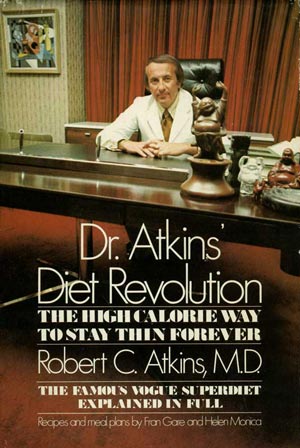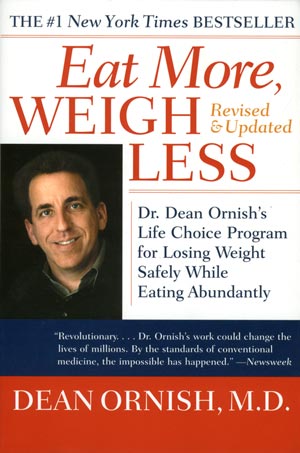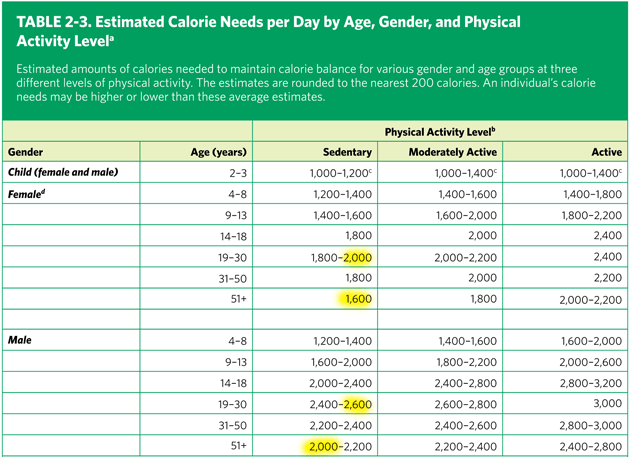
Above all, a no-fail weight loss diet must contain less energy than your body expends throughout the day, otherwise you aren’t going to lose fat or may even gain more. Any time you encounter a weight loss plateau or rebound, this is an indication that you are consuming more calories than your body is expending on energy and structural metabolism.
After experiencing several consecutive weight loss failures, you may easily start believing that “diets don’t work, period!” With these failures in mind, ask yourself the following hypothetical question: “What if I suddenly end up on a desert island with nothing but water? Won’t I keep losing weight until rescued?”
Any reasonable adult will respond to this question without giving it a second thought: “Come on, Konstantin, don’t insult my intelligence! Of course, I will.” –Sorry, I didn’t mean to! I just wanted to make the point that the last time you failed to lose weight, the problem wasn’t with you per se, but with your diet, something that you can certainly fix if you’ll decide to try it again.
Let’s now take a look at the same subject purely from a physiological – energy in/energy out – perspective:
– Do you agree that for as long as your diet contains more energy than your body expends, you will gain weight? It’s a no-brainer, right?
– Do you agree that for as long as your diet contains the same amount of energy as your body expends, your weight will remain the same? Of course – that’s a point everyone will agree on.
– Do you agree that for as long as your diet contains less energy than your body expends, you will lose weight? If, as I hope, you agree, then you and I can also agree with the following axiom:
To keep losing weight, I must consume less energy than my body expends for as long as it takes. If I keep breaking this rule, my weight will remain the same, or I’ll gain even more.
In other words, weight management by the numbers boils down to the following equation:
Daily weight fluctuation = Energy Intake — Energy expenditure
Let’s apply this simple formula to several real-life scenarios. Before we do, I would like to remind you again that caloric calculations in this article are merely hypothetical examples; that the caloric values of foods and energy output are not absolute, meaning that even adult twins may respond differently to the exact same diet. With these important waivers duly noted, let’s do the math:
- Weight gain scenario. If you consume 2,500 calories daily, but expend only 2,410, you will consume 90 more calories than you expend (2,500 — 2,410 = 90). In this case, you will gain 10 grams of fat per day (90 / 9 = 10). Over the course of the year, you may gain 3.6 kg of fat or 7.9 lbs. (10 g x 365 days = 3,650 g) total.
- Normal weight scenario. If you consume 2,500 calories daily and expend the same 2,500 calories, you will neither lose nor gain any weight because of 2,500 — 2,500 = 0.
- Weight loss scenario. If you expend 2,680 calories daily while consuming only 2,500, you will expend 180 calories more than you consume (2,680 — 2,500 = 180). In this case, you will lose 20 grams of fat per day (180 / 9 = 20). Over the course of the year, you may lose a respectable 7.3 kg of fat or 16 lbs. (365 * 20 = 7,300 g) total.
- Faster weight loss with less food scenario: If you expend 2,680 calories daily while consuming only 2,410, you will expend 270 more calories than you consume (2,680 — 2,410 = 270). In this case, you will lose 30 grams of fat per day (270 / 9 = 30). Over the course of the year, you will lose 10.9 kg of fat or 24 lbs. (365 * 30 = 10,900 g) total.
- Faster weight loss with more exercise scenario: If you expend 2,770 calories daily while consuming only 2,500, you will expend 270 more calories than you ingest (2,770 — 2,500 = 270). In this case, you will be losing 30 grams of fat per day (270 / 9 = 30). Over the course of the year, you may lose 10.9 kg of fat or 24 lbs. (365 * 30 = 10,900 g) total.
- Even faster weight loss with less food and more exercise scenario: If you expend 2,770 calories daily while consuming only 2410, you will expend 360 more calories than you consume (2,770 — 2,410 = 360). In this case, you may lose 40 grams of fat per day (360 / 9 = 40). Over the course of the year, you may lose 14.6 kg of fat or 32 lbs. (365 * 40 = 14,600 g) total.
By breaking down the numbers this way, I’ve made it so simple and self-evident, that some people may now say: “Konstantin, don’t insult our intelligence! Who doesn’t know that?”
Well, apparently, a myriad of people don’t, starting with the world’s famous weight-loss gurus and their numerous editors, advisers and promoters. Just consider these two of the most egregious examples:
 Between 1972 and 2003, over 40 million people purchased and read “Dr. Atkins’ Diet Revolution.” Its weight loss strategy was spelled out right on the cover in no uncertain terms, so these buyers knew exactly what they are getting themselves into and what to expect:
Between 1972 and 2003, over 40 million people purchased and read “Dr. Atkins’ Diet Revolution.” Its weight loss strategy was spelled out right on the cover in no uncertain terms, so these buyers knew exactly what they are getting themselves into and what to expect:
“The High-Calorie Way To Stay Thin Forever”
And it wasn’t just a marketing gimmick to sell a book. Right under the cover, Dr. Atkins continues to promote his unusual concept with even more zest:
“You eat as much as you want, as often as you want. You eat luxuriously–heavy cream, butter, mayonnaise, cheeses, meats, fish (and crisp green salads too).” p. 10.
Well, as the saying goes, what goes around comes around – by the time Dr. Atkins passed away in 2003, the number of overweight Americans had increased to 65% from a mere 14% back in 1972, a staggering 464% jump in just one generation.
On the opposite side of the spectrum is Dr. Dean Ornish, an unabashed promoter of a high-carbs lifestyle that is playing right into the kill-the-fat / salt-is-bad / red-meat-is-poison dogma espoused by the likes of the American Heart Association, the American Diabetes Association, and the American Dietetic Association:
 A completely different diet, but the exact same wacky promise:
A completely different diet, but the exact same wacky promise:
“Eat More, Weigh Less: Dr. Dean Ornish’s Life Choice Program for Losing Weight Safely While Eating Abundantly.”
How do you accomplish the gospel of eating more and weighing less according to Dr. Ornish? Simple:
“If you really want to be able to eat as much as you want until you are full and still lose weight, then you need to reduce fat down to around 10% of calories. In practical terms, this means excluding all meats, including fish and chicken, and all oils.” p. 34
Goodness gracious – a vegan weight loss diet with no essential animal fats and no primary proteins, a health ruin in the making, literally!
Nonetheless, enough people have paid their own money to turn his book into “THE #1 New York Times BESTSELLER,” and not one of them ever squeaked: “Dr. Ornish, don’t insult our intelligence.”
You probably won’t be surprised to learn that Dr. Ornish was counseling Steve Jobs of Apple fame prior to his untimely death at 56. Nowadays, he is playing a similar role for former President Clinton and his family.
With diet doctors like this, who needs enemies?
Forget about the Clintons, what about me?
Yep, I know! You want me to tell you how many calories you can eat, so you’ll start losing weight right away: “Give me the N-U-M-B-E-R, doc!” Right?
Sorry, plus/minus a few hundred calories, I don’t know the exact number even for myself. You just can’t determine one with any degree of precision because the human body isn’t exactly an internal combustion engine that runs 24/7 in the exact same conditions, on exact same high-quality fuel, and with the exact same workload.
I already addressed this uncertainty about calories in the “How Long Will It Take Me to Lose the Weight” and “Why One Calorie For Her Is Half a Calorie For Him” posts. Please review them again to understand why you need to concentrate on the daily fat loss, rather than on the number of calories. By itself, this number is meaningless. Here is a brief excerpt:
“Daily fat loss. To establish this number as accurately as possible, you’ll need to stay on a fat reduction diet (after completing your phantom weight loss, of course) for at least 15 to 20 days, or even longer. There are several reasons behind this requirement: (a) the low resolution of consumer weight scales; (b) day-to-day natural weight loss fluctuations; (c) the propensity of weight loss to slow down somewhat as your body adjusts to reduced calorie intake; and (d) inevitable lapses in your daily caloric intake. To properly estimate your daily fat loss, wait until your weight goes down at least 2 kg, and divide this number (i.e. 2 kg) by the number of days it took you to get there. If you do not observe any measurable weight reduction throughout this period, it means that your diet is too generous for your particular rate of metabolism, and you’ll need to reduce your caloric intake even more. Or you may need to increase your level of physical activity. Even better, do both (i.e., eat less and exercise more) until you observe sustainable weight loss. For as long as you consume less nutrients than your body expends for energy and structural metabolism, fat loss is just as assured as sunrise and sundown – no ifs, ends, or buts about it. [link]”
Unfortunately, most people tend to overestimate the amount of energy (from foods) they require by a wide margin. A close friend of mine, for example, was running several marathons each year for the last 40 or so years. To stay in running shape, he had run 10 miles daily for just as long. Yet until very recently, he was about 50 to 60 lbs. overweight.
Then, one day, his knees started to hurt, and he reluctantly agreed with what I had been telling him all along “Michael, to lose weight, you must consume less energy than you are expending throughout the day.” He significantly reduced his food intake. After a while, his weight went down to the norm. He still runs the same number of miles as before, but with 50 lbs. less fat to carry along, his knees no longer hurt. That he lost weight didn’t surprise him, but that he can eat half as much, and still run just as far, and feel even better — that did!
And the bottom line is: if in doubt, eat less!
According to The Center for Nutrition Policy and Promotion, a division of the U.S. Department of Agriculture, the energy requirements for average-height sedentary adults* are quite modest:

As you can see from the above table, the lower range of the calorie intake – 2,000 and 1,600 calories respectively – is for men and women over 51+ years of age. The higher range – 2,600 and 2,000 – is for men and women between the ages of 19 and 30.
These numbers apply to persons of average height – 5’10” (178 cm) for men and 5’4” (163 cm) for women. If your height is below that average, you will expend even fewer calories. And the “sedentary” doesn’t mean you are a couch potato, but simply “… a lifestyle that includes only the light physical activity associated with typical day-to-day life.*”
Based on these figures, a 30-year-old 5’4” tall woman who doesn’t walk at least “1.5 to 3 miles per day at 3 to 4 miles per hour” will gain weight at the rate of 1 gram for every 9 extra calories over 2,000 calories.
Thus, just 90 extra calories per day – less than is found in a small-size apple (125 calories) – may increase her weight by 3.6 kg (8 lbs.) per year (10 g x 365). As she gets older, she may gain even more.
Inversely, to keep losing weight consistently and meaningfully, you’ll need to consume at least 200 less calories less than your average daily need, which means 1,400 to 1,800 calories for women and 1,800 to 2,400 for men with no health-related obstacles, such as thyroid or adrenal disorders, chronic anemia, type 2 diabetes, insomnia, depression, fatigue, and numerous others. With this minimal reduction in calories, you may start losing up to 20 grams of fat per day.
That is where “physical activity” comes handy – a daily treadmill walk at 3.5 miles per hour pace may help you expend between 150 and 200 calories in just 30 to 40 minutes. Because of its steady tempo, the treadmill is about twice as effective as regular walking, so adjust your figures accordingly when walking outside.
Thus, between eating 200 calories less and expending another 200 calories simply by walking, you may lose up to 40 grams of fat per day, or a respectable 1.2 kg (2.6 lbs) per month. If you aren’t in any rush, you can eat a bit more, and still keep losing weight for as long as you continue your daily walking routine.
As you can see, as long as you follow the first rule of weight loss – a no-fail weight loss diet must contain less energy than you expend – sustained weight loss isn’t rocket science.
Zero calories is starvation, anything above zero is a diet
I distinctly recall an angry ruckus following my earlier post “How Long Will It Take to Lose the Weight?” Inside, I used a purely hypothetical 1,400 calorie diet to illustrate the calculation of weight loss duration. One reader commented immediately:
“I’m confused. Is this a joke? 1,400 calorie diet? Isn’t this a WAPF site? I thought nourishment was #1 concern… 1,400 calories is starvation…”
As you can see, even according to the arch-conservative Center for Nutrition Policy and Promotion (CNPP), I wasn’t joking. Eating less is what it takes to lose weight, and it takes a lot of time to boot. Neither I nor the CNPP made up this rule, Mother Nature did.
Finally, I urge you not to confuse the WAPF dietary recommendations for healthy, active, and normal-weight people with a reduced-calorie diet for people who are interested in weight loss. While the core principles are identical – traditional diet, real foods, healthy fats, and a moderate amount of unprocessed carbohydrates – the caloric intake isn’t. As the rule says, a no-fail weight loss diet must contain less energy than you expend.
Believing otherwise is definitely a joke.
* U.S. Department of Agriculture and U.S. Department of Health and Human Services. Dietary Guidelines for Americans, 2010. 7th Edition, Chapter 2, p. 14. Washington, DC: U.S. Government. Printing Office, December 2010. [PDF link]
Previous posts from the “Why Diets Fail” series:
1. The Real Reason Diets Fail and What You Can Do About It
2. How Long Will It Take Me to Lose the Weight?
3. Why One Calorie For Her Is Half a Calorie For Him
4. The Top Four Misconceptions Behind Weight Loss Failure
5. Energy Metabolism: The Good, The Bad, and In-Between
6. The 12 Rules of Safe and Effective Weight Loss
Please subscribe to FREE UPDATES at the top of the page, so you won’t miss the next post.
For your health and safety, please read these important Weight Loss Common Sense Warnings and Disclaimers before commencing a reduced-calorie diet.
Photography credit:
Cover illustration: © 2013 iStockPhoto LLP;








Weight Loss Rule #1: Use Less Energy Than You Expend
Hmm, agree and disagree. The math and calories is right…but I have done this. ANd have not lost weight due to ‘things’ being haywire in my body, so that being said that if this basic idea doesn’t work for someone or it is taxing their energy, body and mind…get help 🙂 in a good way. See a holistic Dr too test your reactions to foods, hormone levels, toxin counts and take a look at stress levels, sleep and any area of malnutrition. I used to work out 2-4 hrs a day and eat lean meats and veggies (before WAPF y’all!) I would gain weight and thought I was crazy or even maybe sleep-eating, hahaha. My thyroid was not in order, effecting my adrenals and digestion, etc… So we learn a lot through Sarah and know we need all those nourishing foods to keep our bodies healthily, if everything is in perfect order then yes this will work. If you do all this and your still healing your body this will not work and you will be endlessly frustrated. Personal experience and opinion, and adrenal fatigue s no fun! Sugar and grains is very important for fat-weight loss, even fruit. There is a lot of science to why certain food metabolize differently even with the same calorie content. Fungal, yeasts and bacterias in each persons gut has a lot to do with it too. I wish it was just as easy as eating less and being more active, if that were true I think more people would be 100-150 pounds.